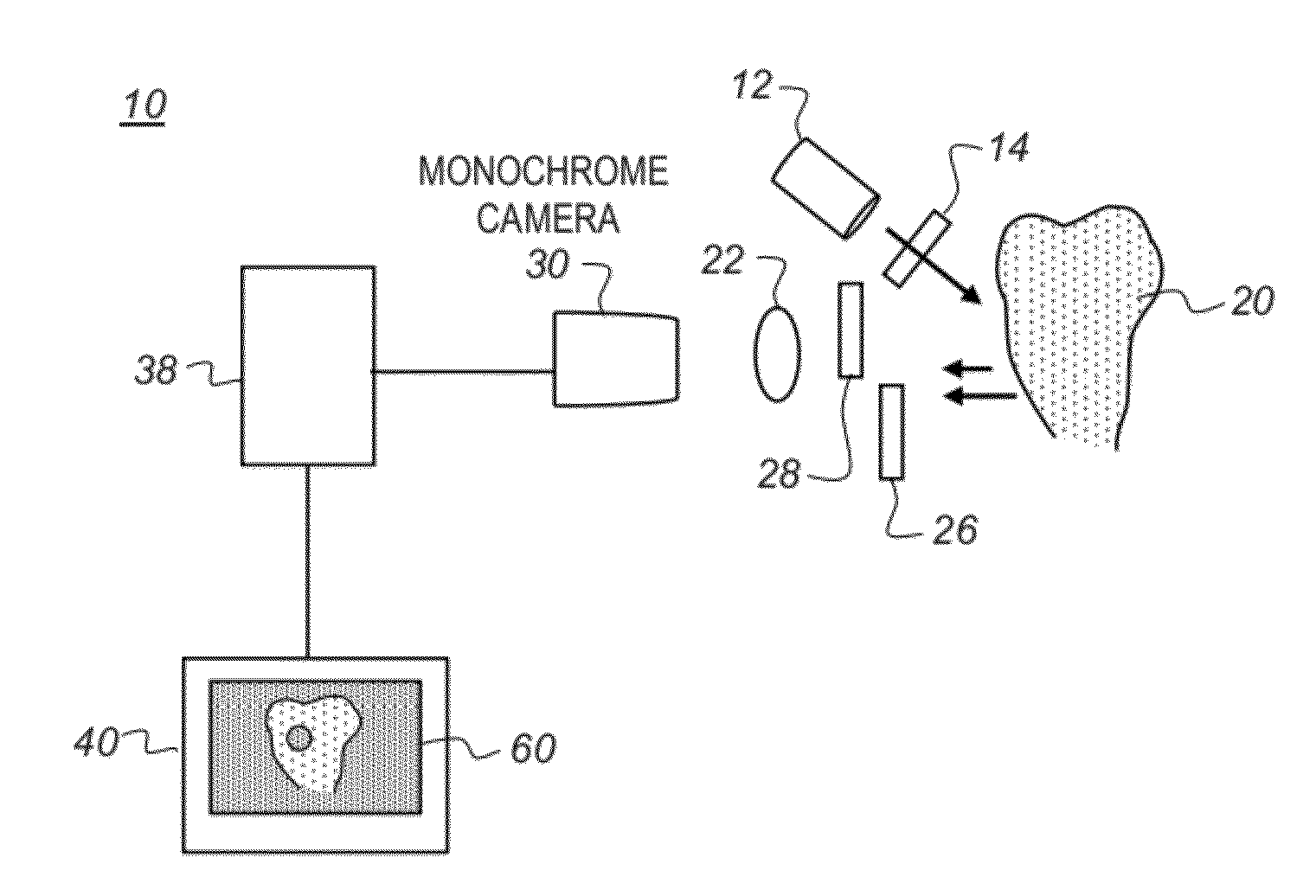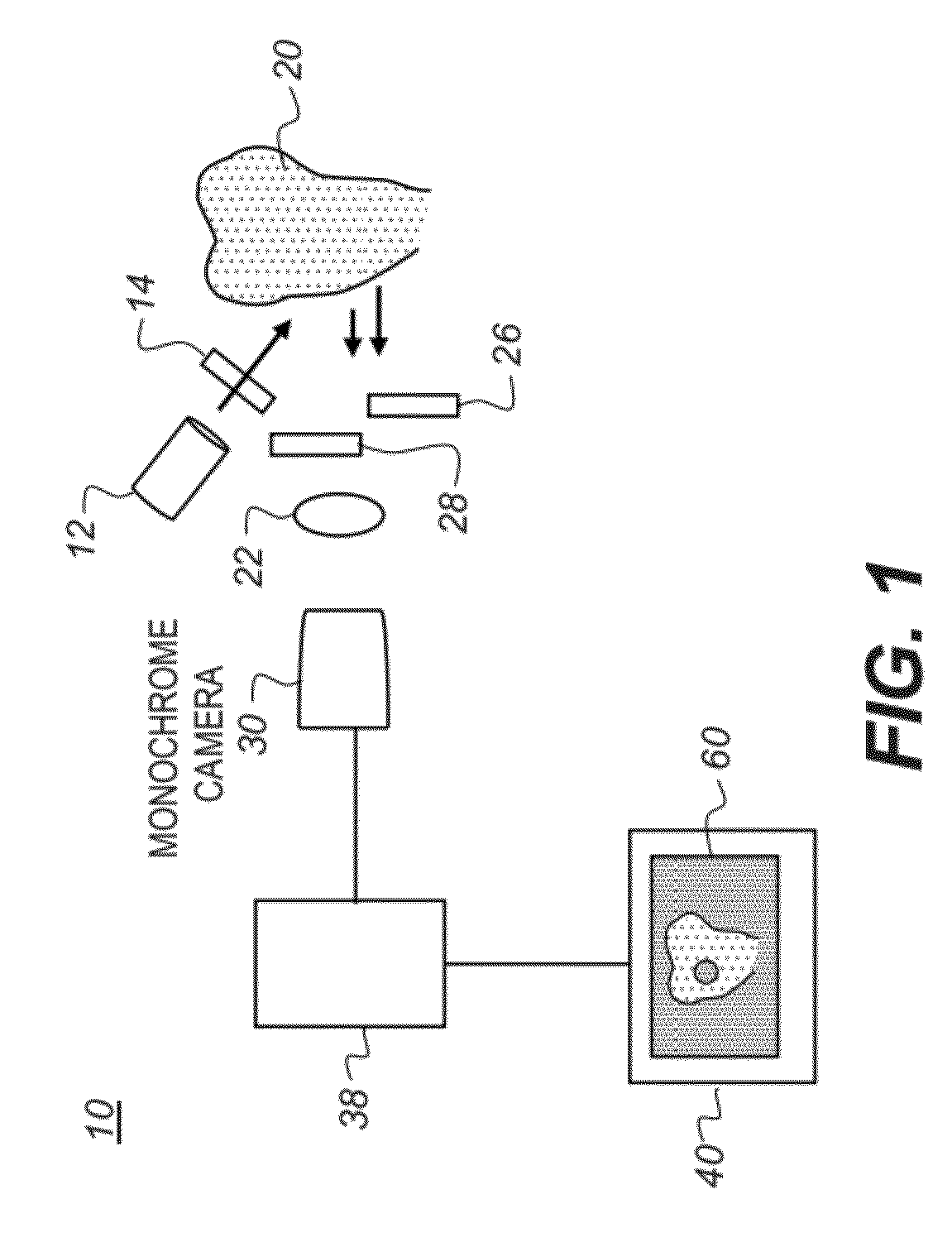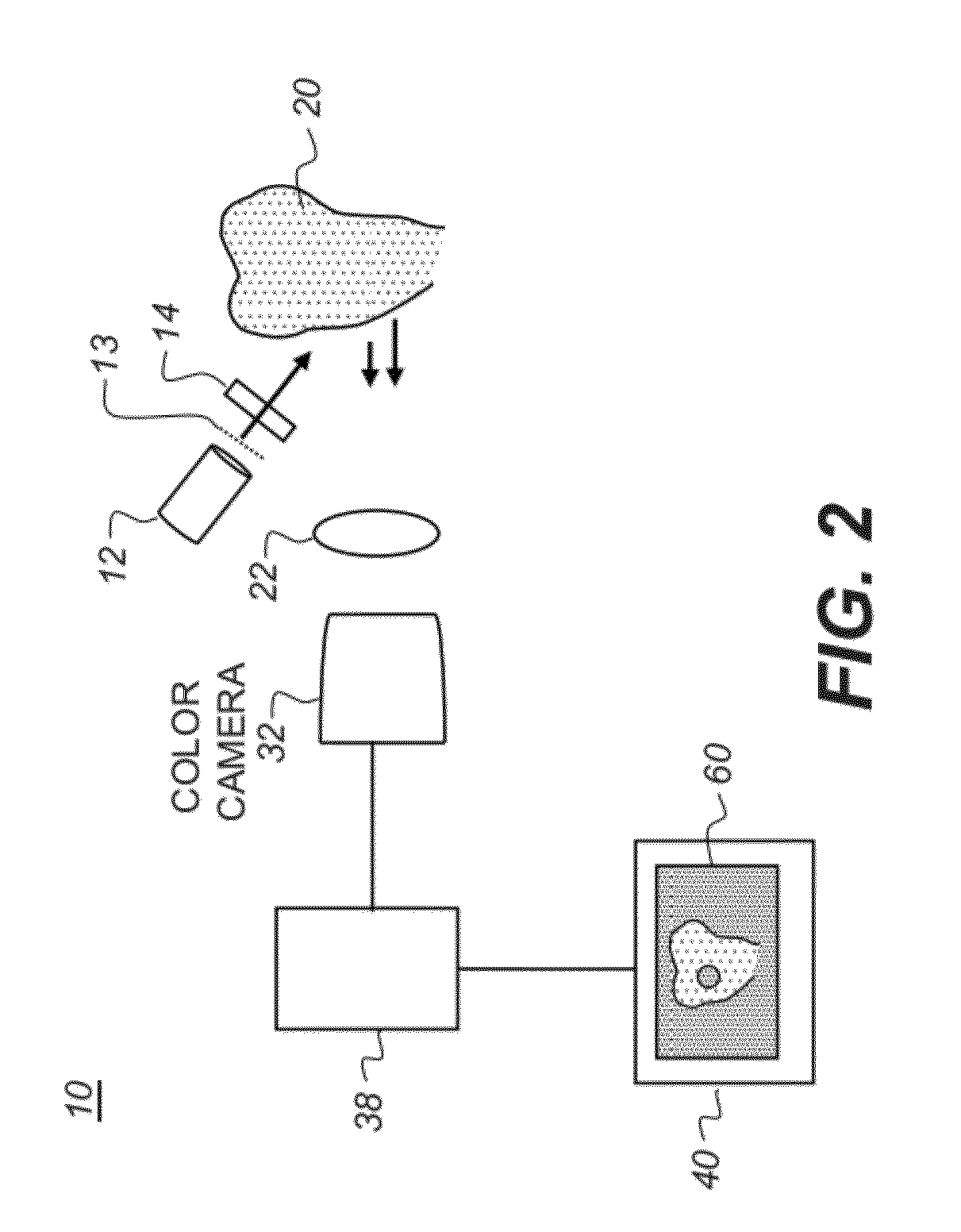Apparatus and method for caries detection
a caries and apparatus technology, applied in the field of dental imaging methods and apparatuses, can solve the problems of permanent tooth damage and even tooth loss, exposure to x-ray radiation, risk of damaging weakened teeth, spreading infection with tactile methods, etc., and achieves the effect of reducing specular reflection and reducing angular effects
- Summary
- Abstract
- Description
- Claims
- Application Information
AI Technical Summary
Benefits of technology
Problems solved by technology
Method used
Image
Examples
Embodiment Construction
[0062]The present description is directed in particular to elements forming part of, or cooperating more directly with, apparatus in accordance with the invention. It is to be understood that elements not specifically shown or described may take various forms well known to those skilled in the art. Where they are used, the terms “first”, “second”, and so on, do not necessarily denote any ordinal or priority relation, but may be simply used to more clearly distinguish one element from another.
[0063]Fluorescence can be used to detect dental caries using either of two characteristic responses: First, excitation by a blue light source causes healthy tooth tissue to fluoresce in the green spectrum. Secondly, excitation by a red light source can cause bacterial by-products, such as those indicating caries, to fluoresce in the red spectrum.
[0064]In order for an understanding of how light is used in the present invention, it is helpful to give more precise definition to the terms “reflectan...
PUM
 Login to View More
Login to View More Abstract
Description
Claims
Application Information
 Login to View More
Login to View More - R&D
- Intellectual Property
- Life Sciences
- Materials
- Tech Scout
- Unparalleled Data Quality
- Higher Quality Content
- 60% Fewer Hallucinations
Browse by: Latest US Patents, China's latest patents, Technical Efficacy Thesaurus, Application Domain, Technology Topic, Popular Technical Reports.
© 2025 PatSnap. All rights reserved.Legal|Privacy policy|Modern Slavery Act Transparency Statement|Sitemap|About US| Contact US: help@patsnap.com



